The Essential Guide to Baby Swim Lessons
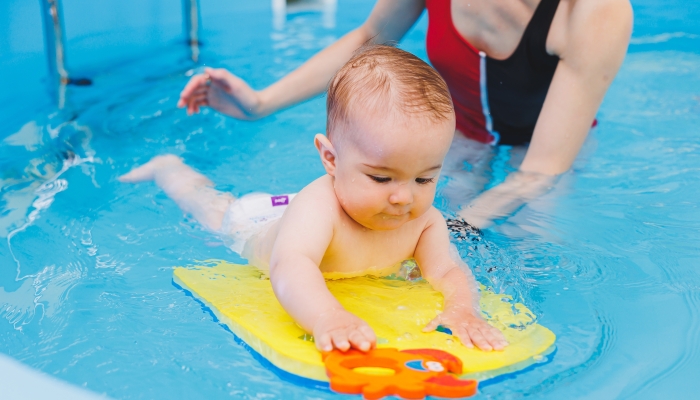
- There are a few methods for teaching babies to swim.
- Babies need to learn how to swim mainly for their safety.
- You can start your baby in swim lessons as early as six months.
- Prepping for their lessons stands to make them more successful.
As parents, we’re always looking for ways to keep our kids safe, whether it’s learning the correct choking procedures, basic first aid, or teaching them about staying out of the street. Even so, water safety somehow slips through the cracks, even among families who live in areas with tons of pools, ponds, and the like.
As you’ll soon read, there are significant benefits to making swim safety a top priority, and it’s easy to do that by enrolling your baby in swim lessons from the start. If you’re nervous about the process or just unsure what it entails, don’t worry! Stay put and explore this essential guide to baby swim lessons that’ll walk you through it all!
Baby Swim Lessons: What Parents Should Know
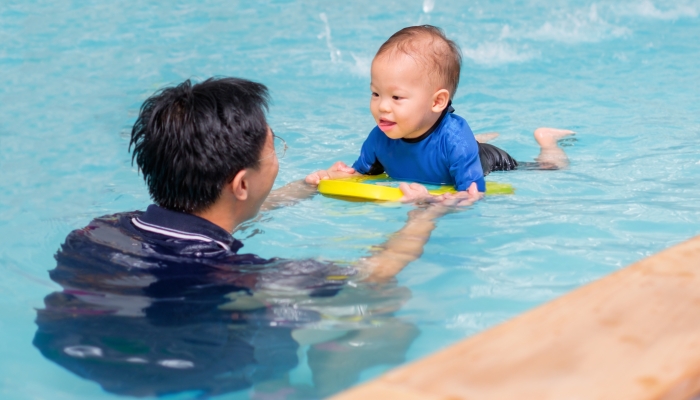
Baby swim lessons don’t quite ring true to the name. At this age, the idea of swim lessons is centered more on survival swimming than basic swim strokes. It’s about teaching your baby how to roll to their back and float as they wait for help, maybe even flipping to swim short distances depending on their exact age and gross motor milestones.
Keep in mind that not all swim programs are alike. There are two primary methodologies to baby swimming, both with their own unique set of criteria. The first method is traditional swimming lessons. These lessons take a slow approach to swimming, getting your baby comfortable in the water over time while teaching them the needed swimming techniques.
You can find traditional swim lessons through major organizations like the YMCA or the Red Cross, with many smaller, local options available as well. These lessons are offered in a group or individual setting in half-hour sessions a few days a week.
The other method is ISR, or Infant Swimming Resource, which takes a more rough-and-tumble approach. These lessons are strictly one-on-one for 10 minutes per day, four to five days a week for six weeks. Their goal is self-rescue, teaching babies to instinctively go for floating in the event they fall into the water, eventually learning to swim-float-swim.
Why Do Babies Need to Learn How to Swim?
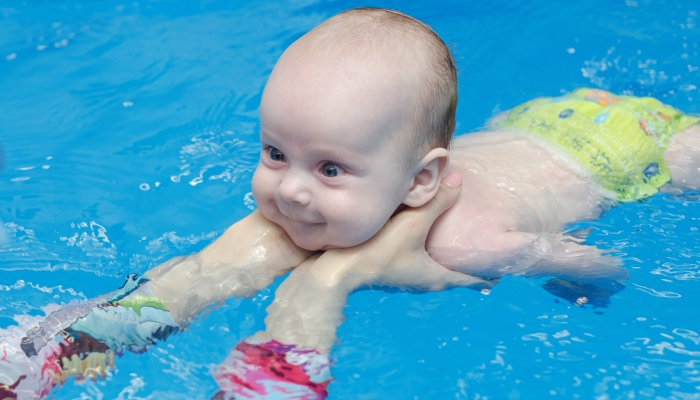
In short, babies need to learn how to swim for their own safety. According to the CDC’s drowning facts11. Centers for Disease Control and Prevention. Drowning facts. Centers for Disease Control and Prevention. 2022. https://www.cdc.gov/drowning/facts/index.html, “More children ages 1–4 die from drowning than any other cause of death.” Likewise, “Nonfatal drowning can result in long-term health problems and costly hospital stays.”
Even so, the study Water safety training as a potential means of reducing risk of young children’s drowning22. Asher, K. N., Rivara, F. P., Felix, D., Vance, L., & Dunne, R.. Water safety training as a potential means of reducing risk of young children’s drowning. Injury Prevention. 1995;1(4), 228–233. https://doi.org/10.1136/ip.1.4.228 concludes that “Swimming ability and safety skills of young preschool children can be improved through training.”
That means this training is a vital piece of preventing drowning incidents, as babies will have the skills they need in the event of trouble. As tough as it is to look at the hard facts, it’s a needed perspective for understanding the importance of baby swim lessons.
When to Start Baby Swimming Lessons
Many organizations like ISR allow lessons to start as early as six months old, though it’s worth noting that the American Academy of Pediatrics recommends swim lessons starting at age one33. American Academy of Pediatrics. Swim lessons: When to start & what parents should know. HealthyChildren.org. 2019. https://www.healthychildren.org/English/safety-prevention/at-play/Pages/Swim-Lessons.aspx. Even so, many parents (myself included) have put their children through ISR or similar programs prior to the one-year mark without issue.
All that aside, when it comes to what age is best, much of that is up to the parent’s discretion. You know your child’s temperament best and where they are in their physical and emotional development. Take all of that into consideration when deciding between baby or toddler swim classes.
What to Look for When Choosing Swim Lessons for Your Baby
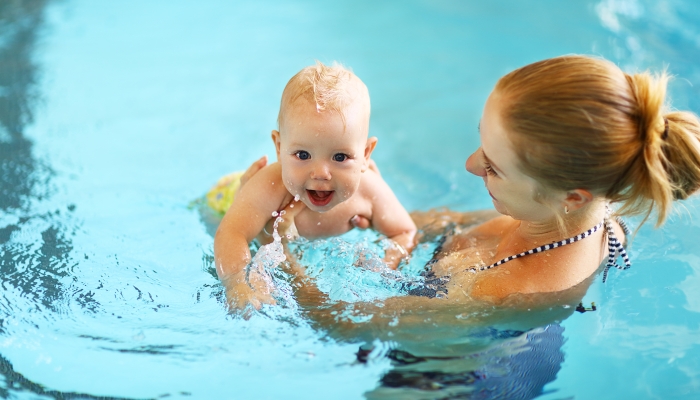
To give your baby the best start to swim lessons, remember the following pointers when you’re researching the swim schools in your area.
- Methods: Explore the practices of each swim school not only in their approach to teaching swimming. Look at how the swim instructor teaches, their rules and criteria for safety, how they encourage their students, and the like.
- Levels: When you start babies swimming at such a young age, you want to be sure they have room to grow as they age. Look for a program that has levels based on progression and even refresher courses when they struggle.
- Ratios: You’ll need to decide what student-to-teacher ratio you’re comfortable with. If it’s one-on-one, that’s great; if not, be sure whatever group lessons you choose isn’t overrun with kids so your child will get the attention they need.
- Certifications: While you can count on most advertised swim schools to have the proper certifications for their instructors, you don’t want to leave that as an assumption. Double check your child’s instructor is fully certified to teach swim.
- Recommendations: I don’t know about you, but when it comes to my kids, I feel so much more comfortable going off the positive recommendations of close friends and family. Ask around and see if they’ve got any feedback.
Preparing for Your Baby’s Swim Lessons
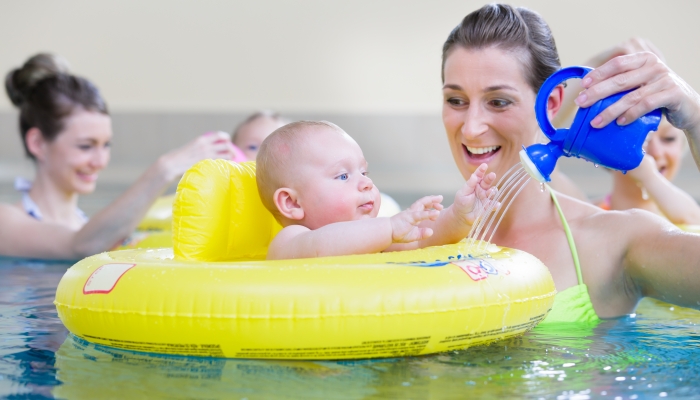
It can be stressful to introduce such a big milestone to your baby, especially when there may be some tears involved. Luckily, there are several ways you can prepare for their swim lessons that’ll take some of the edge off.
- Bath prep: Try prepping your baby for their lessons by starting in the bath. Get them used to the feeling of water on their head and even practice holding them on their back in a float position; that’ll make day one of the lessons less surprising.
- Pack well: Make sure you pack the right way so your baby is comfortable after their lesson. Similar to pool or beach essentials for babies, pack dry clothes, normal diapers, wipes, swim diapers, and towels. Throwing in sunscreen and a snack and drink for after is also helpful.
- Nap first: At face value, it may seem like a short and easy lesson, but their little bodies are going to work very hard to learn these new skills. If you can, work a nap in prior to the lesson since it’s sure to exhaust them.
- Avoid eating: If you can, avoid giving your child food for a few hours prior to the lesson. The reason is they’re likely to take in some of the water as they learn the ins and outs. If their stomach becomes too full, you can guess what’ll happen!
- Don’t rush: The last thing you want to do is run behind and have to rush, especially when your baby will already be thrown into a new environment and experience. Give yourself time to show up early and allow them to get used to this new scenario.
FAQs
Can parents or guardians participate in the swim lessons with their babies?
Whether or not the parent participates hinges on the program chosen. Some traditional swim lessons do offer courses specifically for parents to come in the water alongside their babies. If that’s something you’re interested in, look for that off the bat, as not all programs use that methodology.
As for ISR lessons, parents should expect not to participate until the last lesson, which is viewed as their test lesson. During this lesson, your baby will go into the water in a “fall-in” scenario fully clothed to see if they use the skills they’ve been taught properly.
Depending on the age, parents are then asked to come into the pool and given more of a hands-on lesson in order to demonstrate how they can continue supporting their baby in the water to keep their skills sharp.
References
- Centers for Disease Control and Prevention. (2022, October 7). Drowning facts. Centers for Disease Control and Prevention. https://www.cdc.gov/drowning/facts/index.html
- Asher, K. N., Rivara, F. P., Felix, D., Vance, L., & Dunne, R. (1995). Water safety training as a potential means of reducing risk of young children’s drowning. Injury Prevention, 1(4), 228–233. https://doi.org/10.1136/ip.1.4.228
- American Academy of Pediatrics. (2019). Swim lessons: When to start & what parents should know. HealthyChildren.org. https://www.healthychildren.org/English/safety-prevention/at-play/Pages/Swim-Lessons.aspx
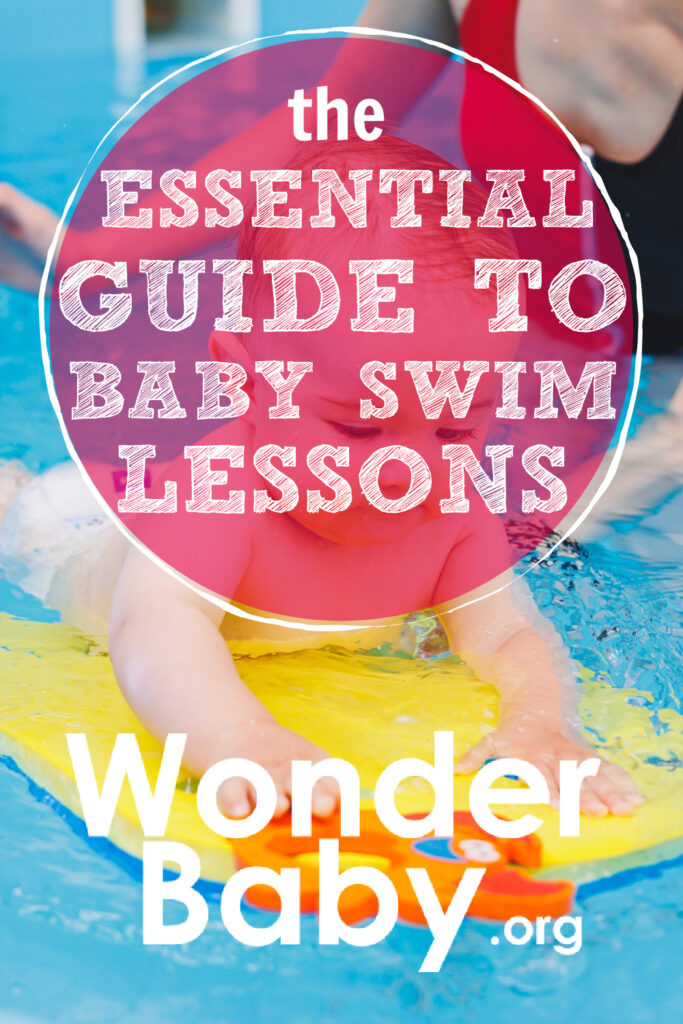
Related Posts
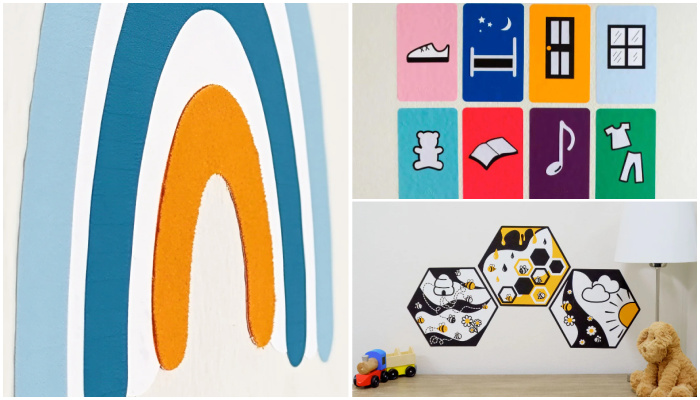
Parenting
Sensory Wall Art: 5 Tips to Create a Room Your Blind or Low-Vision Child Will Love
Even if your child can’t see their surroundings, personalizing and decorating their room with thoughtful, sensory-friendly design can make a big difference in their confidence, independence, and joy.
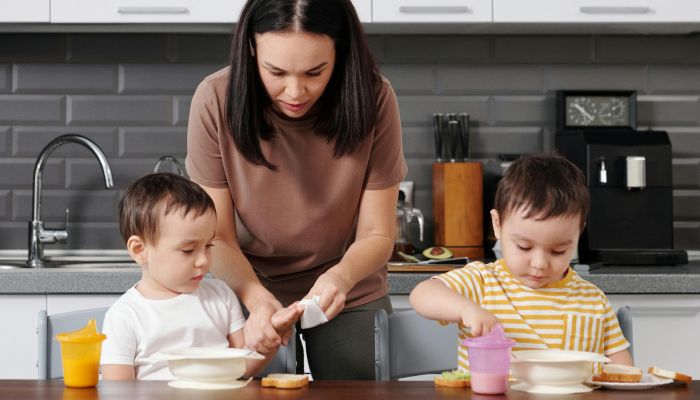
Parenting
4 Tips to Manage Twins Alone as a Single Parent
Taking care of twins alone as a single parent can feel overwhelming. Learn practical ways to help lighten the load.

Parenting
How to Manage Twin Escalation Syndrome
Discover effective strategies for managing twin escalation syndrome, including promoting individuality and fostering positive interactions.